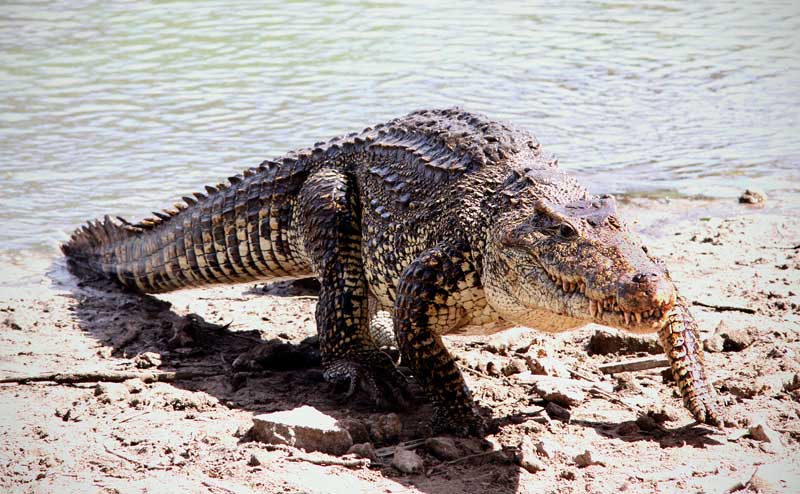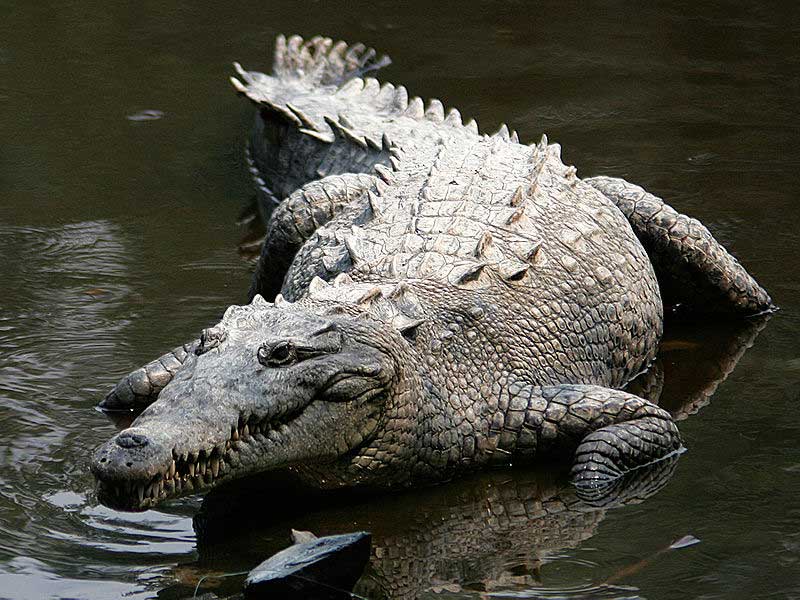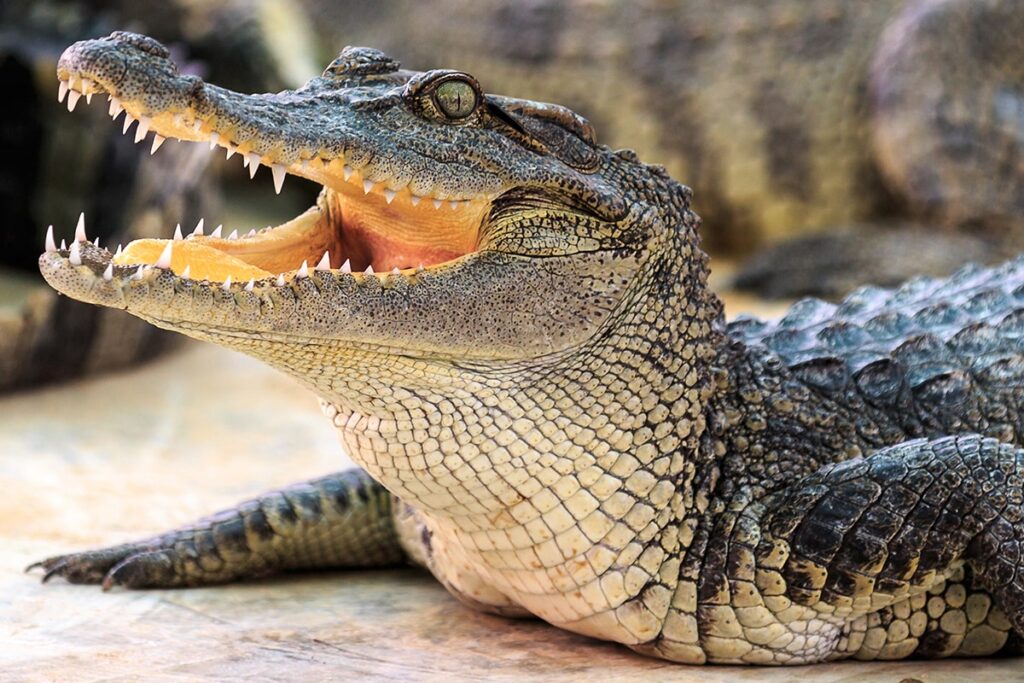- Spawn: 99% of all crocodile hatchlings are eaten by other animals within their first year of life. Predators of crocodile young are mainly larger fish, herons, lizards and other (adult) crocodiles
- Speed: A crocodile can swim at up to 29 km/h. On land, the highest recorded speed is 27.4 km/h
- Meals: A crocodile only eats around 50 complete meals per year and can go for long periods without eating
- Largest crocodiles: Saltwater crocodiles (Crocodylus porosus) are not only the largest crocodilian species, but also the largest living reptile. A saltwater crocodile can grow up to 6.7 meters long and weigh up to 2 tons
- Smallest crocodiles: The smallest crocodile species is the dwarf crocodile (Osteolaemus tetraspis), which grows to a maximum length of 1.9 meters. The dwarf crocodile is more terrestrial than other crocodile species
- Territories: Male crocodiles are territorial; they patrol and protect coastlines of varying lengths
- Cold-blooded animals: Crocodiles are cold-blooded animals that rely on warmth from the sun and water to be active
- Hunting: Crocodiles don’t usually hunt their prey; their strategy is based more on lurking, waiting and surprising
- Growth: Crocodiles living in captivity can reach a length of 1.5 meters in just one year. However, this only applies to some species
- Crocodile tears: The term ‘crocodile tears’ (which exists in several different languages and means crying “fake tears”) comes from the myth that reptiles cry when they eat humans. Reptiles do indeed wipe their eyes when they eat – but this is simply due to fluid draining from their eyes as they eat

Fact: Unlike most other reptiles, crocodiles can “high walk”
Crocodile jaws and teeth
- Cooling: When crocodiles sit on the water’s edge with an open mouth, it’s to cool off; they sweat through their mouths
- Teeth: Crocodile jaws contain 48 – 80 teeth in total. The teeth are made for catching, holding and crushing – not chewing. Crocodiles can replace all their teeth if they are lost
- Stones: Crocodiles swallow stones, which help break down (“chew”) food in the stomach. The stones also act as ballast
- Jaw muscles: The muscles that control crocodiles’ jaws can close the mouth with tremendous strength – but are very weak at opening it. An elastic band around a crocodile’s snout is enough to keep the mouth closed

Crocodiles have been on Earth for more than 240 million years and have not changed much anatomically in the last 80 million years. In comparison, humans have only been around for 200,000 years!
More facts about crocodiles
- Age: Crocodiles can live up to 100 years. Crocodiles have existed on Earth for more than 240 million years. However, their anatomy hasn’t changed much in the last 80 million years. In comparison, humans have only been on Earth for about 200,000 years!
- Crocodile skin: Crocodile skin is considered some of the best animal skin in the world and is especially valued for its durability and softness. In some tribal societies, crocodile skin is also a status symbol. However, only the belly skin is used by humans; the skin on the back is tough and can withstand arrows, spears and even some bullets!
- Role model: Some tribes (e.g. in New Guinea) use the crocodile as a model and scar their own skin to make it look like crocodile skin
- Sense organs: The crocodile’s nostrils, eyes and ears are tactically placed on the top of its skull, so it is able to smell, see and hear even though it is almost completely submerged in water
- Eyes: When crocodiles are underwater, there is a protective membrane that covers their eyes – a bit like diving goggles
- Aggressiveness: Crocodiles show more aggression during the mating season, which coincides with the rainy season (monsoon)
- Care: Female crocodiles are generally very caring mothers; they look after the eggs in the nest for all 90 days leading up to hatching and then their newly hatched young for about 6 weeks
- Social reptiles: Crocodiles are the world’s most social reptiles. Nile crocodiles (Crocodylus niloticus) sometimes hunt together or even in packs
See also:


